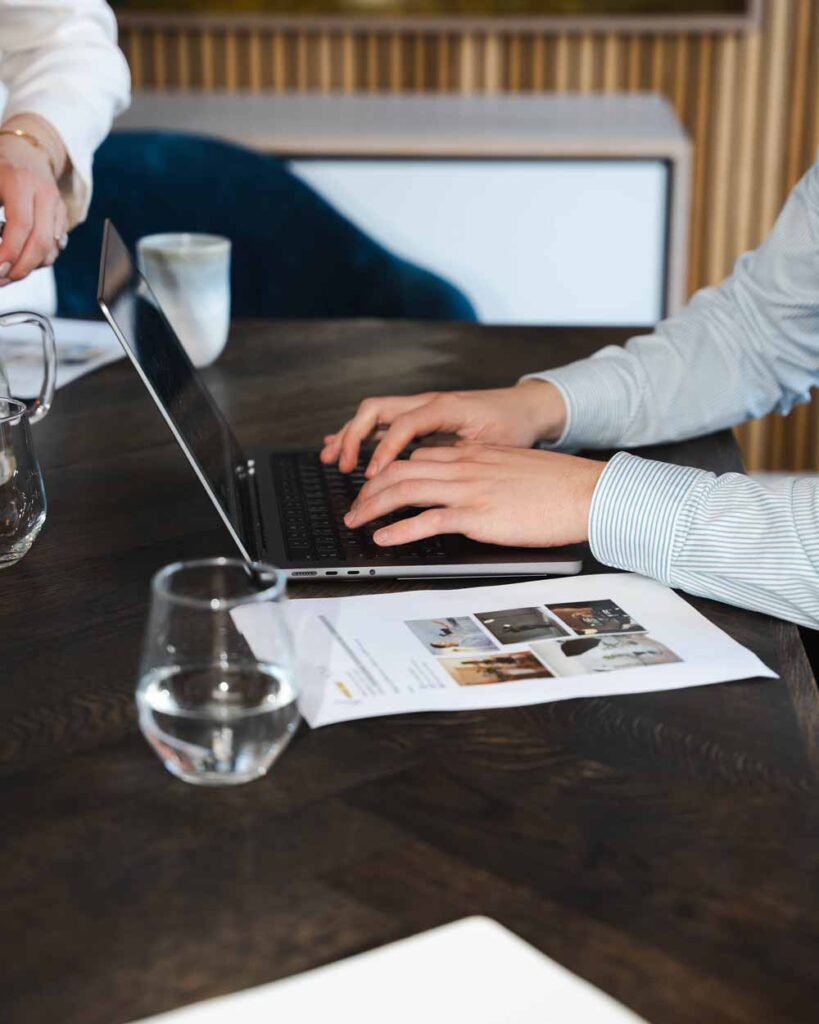3 automatic email flows that increase sales on your webshop
With automated email flows, you can target your customers exactly where they are in the customer journey. This way, you increase conversions, save time and market your webshop directly to your customers' inboxes.
If your company works with email marketing, you may have already considered doing a bit more with automated email flows.
Maybe you've already tried them in the form of automated welcome emails, but would like to make them a bit more personalized based on your customers' user behavior?
If so, you've come to the right place. In this blog post, I'll share three of the most important email flows that can increase sales on your webshop. And once you've invested some time in creating them, you won't have to lift a finger again.
Smart me'? 😉


1) Flows you want to learn
- Welcome Flow
- Abandoned cart flow
- Winback of inactive customers
2) How do automatic flows work?
An email flow is, as the name indicates, a flow of emails. In short, they work by sending the first email in response to a so-called "trigger". A trigger can be many different things, such as a customer signing up for your newsletter - or a customer who has placed items in the cart but for some reason has not completed the purchase.
Regardless of what triggers your visitors to enter the email flow, you can then structure your flow based on how the individual reacts. This way, you can personalize the flow and build it to suit your webshop and your customer segment.
The possibilities are endless, and if you become an expert at setting up the right flows based on the customer journey, you are guaranteed to increase your revenue and save precious time.
That's why you need to set up automatic email flows today:
- Increase your revenue
- Maximum exposure for minimal effort
- Time saving
- Customizable for your business
3) Welcome your subscribers with a strong welcome flow
If you have an online store, you most likely also have a newsletter that your customers can sign up for. Often there are different reasons why they sign up, so your welcome flow should be structured accordingly.
Because you want those who have signed up for your newsletter without ever having made a purchase to actually make a purchase - and thus become customers.
And how do we get them to do that?
1. email
An obvious option could be to offer them a discount code that either gives them a small discount percentage or free shipping. You already have a huge advantage in that your subscriber has already shown interest by having signed up for your newsletter in the first place - and you should of course take advantage of that.
BUT... a lot of your subscribers sign up in connection with a purchase. And there's almost nothing worse than receiving a discount code RIGHT after you've made a purchase. That's why you need to make a difference and instead make this category of subscribers aware of what they get out of being part of your newsletter instead of giving them a discount code.
It could be access to your blog posts (if you have a blog) or that the person is now the first to receive various promotions and discount codes in the future. In short, let them know the many benefits they now get by being a part of your newsletter.
2. email
If your customer hasn't made a purchase with the discount you've given, it's a good idea to send a reminder. You can send a follow-up email 5-7 days later, reminding them that the discount code will expire in the near future.
3rd, 4th and 5th email
From here you can build on your flow as you wish. If you have a Trustpilot account, this flow is a great way to get more reviews. You can also share valuable content like blog posts and guides about your products.
The most important thing is that you consider what can provide value for your subscribers when creating your flow.
Key elements of the welcome flow:
- Make the subscriber aware of USPs - such as fast delivery, long return policy etc.
- Let your subscriber know what they get out of signing up.
- Get your subscriber to engage - either by using discount codes, reading blog posts, etc.
- Only share content that provides value to your subscriber.

Feel free to use the image above as long as you link to: https://amplify.dk/academy/e-mail-automation-flows/
For example:
Foto: <a href="https://amplify.dk/en/academy/e-mail-automation-flows/">Amplify: E-mail flows</a>
4) Have your customers abandoned their cart on your online store?
Now is the time to give them a carrot!
There can be many different reasons why visitors to your webshop do not complete their purchase. Often it's small details like their card being in their bag, or maybe they regretted adding shipping. In short - it can be many different things.
However, the fact is that as many as 70% of all items placed in the shopping cart on webshops do not become purchases. Therefore, this is a flow you really want to get going for your subscribers.
Whatever the reason for not completing the purchase, what all abandoned carts have in common is that the individual has been so close to converting that it probably doesn't take much to get them to do so.
1. email
The first email you send out should make the customer aware that they have items in their cart waiting for them. However, it's very important that you send it as soon as possible so that your potential customer doesn't wander too far away from your webshop.
In other words, you need to "catch them" right where the products are still fresh in their minds. It's also important that you make it as easy as possible for them to get to the basket - if possible, show them the specific products that are in the basket.
2. email
If your potential customers haven't completed the purchase, you want to do more to ensure that they actually convert. Depending on the price range in your webshop and how much money is in the basket, you can offer a certain percentage or free shipping.
Depending on which email system you use, you can set up a condition for when each individual should be offered a discount or free shipping. Here you can make reservations for how much money is in the basket.
No discount?
If you are not interested in giving any kind of discount, it may be a good idea to send an email with information about your return policy - such as a shipping label that makes it easier to return. The purpose of this type of email is to make you think about the conditions that may have prevented the purchase from being completed - such as return policy or similar.
3. email
The third email can be a follow-up email if you have given a code that either gives a small discount or free shipping. Make them aware that the code still works.
Key elements of the abandoned cart flow:
- Get an email out as soon as possible.
- Make it easy to go to the basket - if possible, show the products.
- Speak to the reservations that may have prevented them from completing the purchase.
- Follow up after a few days.

Feel free to use the image above as long as you link to: https://amplify.dk/academy/e-mail-automation-flows/
For example:
Foto: <a href="https://amplify.dk/en/academy/e-mail-automation-flows/">Amplify: E-mail flows</a>
5) Winback of inactive customers
There could be many reasons why your previous customers haven't shopped with you for a while. And in the physical world, you would be able to do absolutely nothing about it.
But that's exactly why email marketing - and automated flows in particular - are so effective. You have a unique opportunity for maximum exposure - for free.
Specifically, your trigger in this flow should be a certain number of days since your customer made a purchase. When determining the number of days, it's important to determine it based on your industry. For example, there is a big difference between selling makeup products or furniture. Therefore, the flow should also be structured differently depending on your type of business.
Here is an example of a flow that can be activated after 60 days, for example.
1. email
The first email can, for example, be an email alerting your customer that it has been a while since they last shopped with you. In the email, you can highlight some of your USPs, such as fast delivery, or you can highlight your best-selling products.
2. email
If your customer hasn't converted after the first email was sent out, you can go one step further and give a discount code for either free shipping or a small percentage off their purchase. Of course, this also depends on the type of business and industry you're in.
If you're not interested in giving a discount, you can send a follow-up email pointing out some of your other USPs or send some material that inspires them to take a look at your webshop.
Key elements in Winback of inactive customers:
- The flow should be built based on your type of business
- Inspire and engage the customer to give your webshop a second look
- Use your USPs to remind the customer of the benefits of shopping with you

Feel free to use the image above as long as you link to: https://amplify.dk/academy/e-mail-automation-flows/
For example:
Foto: <a href="https://amplify.dk/en/academy/e-mail-automation-flows/">Amplify: E-mail flows</a>
Do you need guidance or help setting up email flows that convert
Then feel free to contact me or one of my colleagues. At Amplify, we work in a targeted and data-driven way with email marketing, and can help you set up the right flows that suit your business. Feel free to send me an email at seo@amplify.dk or get in touch with one of my colleagues at info@amplify.dk.
Get even smarter
Whether you're a generalist or a marketing specialist, our specialists have put together some great advice for you on our blog.

